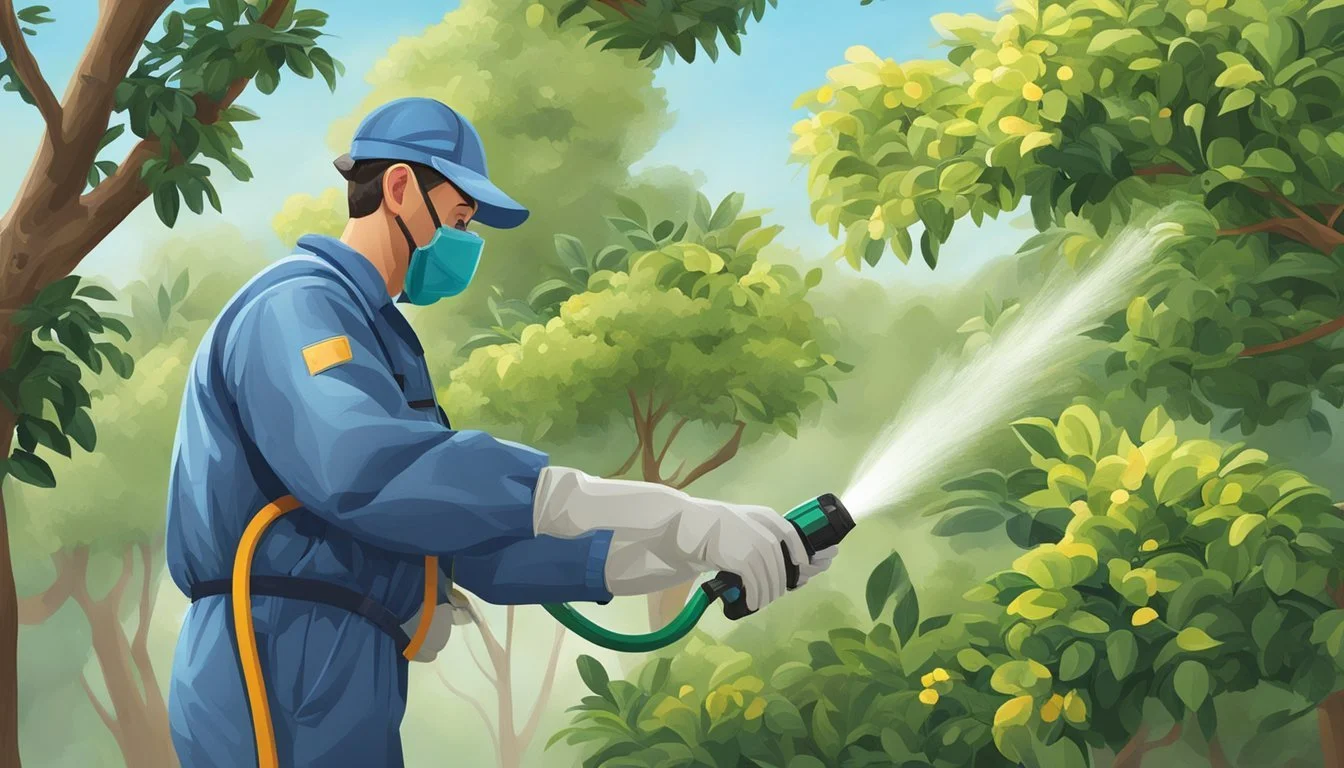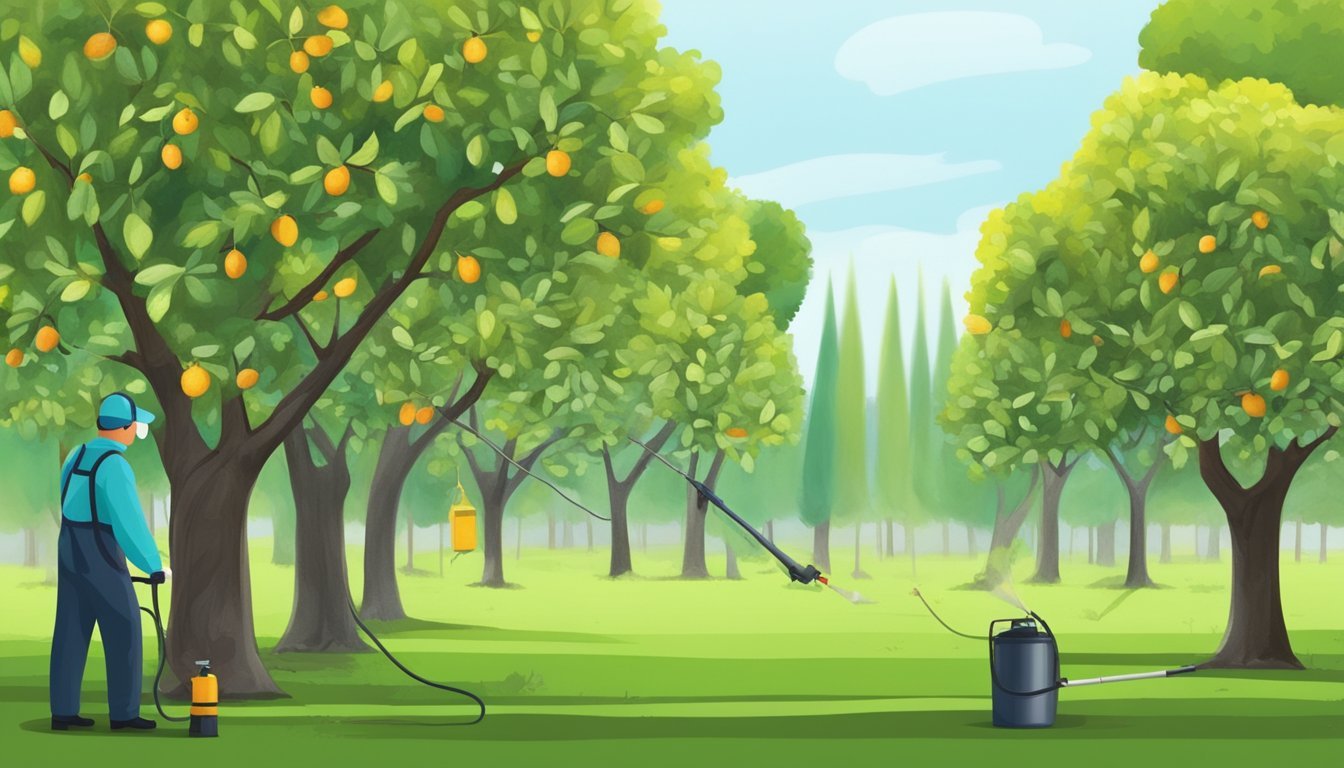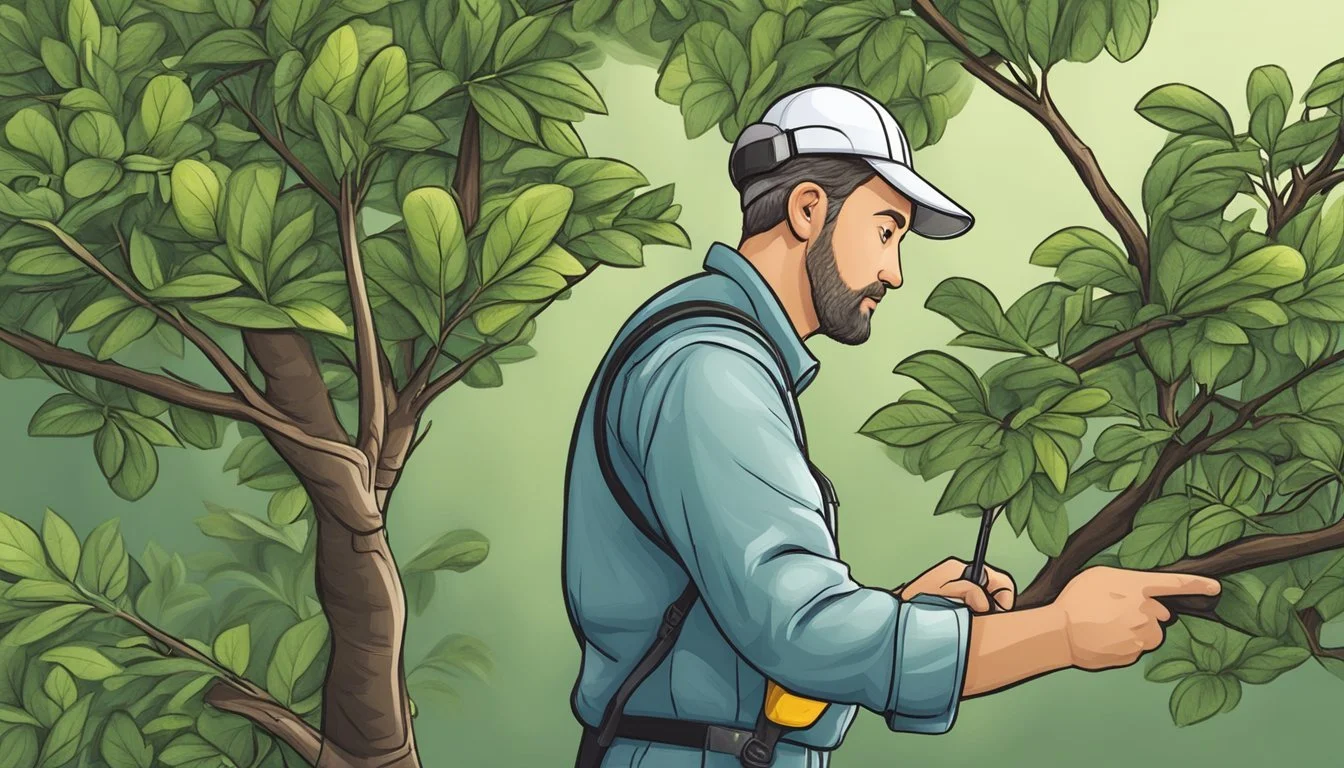Pest Control for Prune Trees
Effective Management Strategies
Prune trees, cherished for their delightful fruit and ornamental value, face numerous challenges, among which pest infestation stands prominent. Efficient pest control is critical to ensure the health and productivity of these trees. Pests can impact growth, reduce fruit yield, and at times, even cause the death of the tree. Thus, managing and preventing pests is an essential aspect of cultivating prune trees.
Appropriate pest control strategies encompass a range of practices from cultural to chemical methods. Cultivation techniques like proper pruning help maintain tree vigor and prevent infestations. On the other hand, identifying and addressing pest issues early on can preserve the tree's structure and fruit quality. Integrating pest management with regular care routines is vital to sustaining prune tree health.
While chemical treatments are available, they must be used judiciously to protect the environment and beneficial organisms. Biological controls and organic methods are increasingly preferred due to their sustainable approach. Ensuring a healthy tree through balanced fertilization, adequate irrigation, and timely pruning can significantly reduce the likelihood of pest problems, establishing a strong foundation for a thriving prune orchard.
Understanding Pest Control in Prune Trees
Effective pest control in prune trees is essential for maintaining their health and productivity. This section delves into the various pests that can affect prune trees, how to identify the symptoms of an infestation, and the importance of overall tree health in managing and preventing pests.
Types of Pests Affecting Prune Trees
Prune trees are susceptible to various pests, each capable of causing significant damage. Aphids and mites are common nuisances, often leading to stunted tree growth and poor fruit quality. Scale insects and bark beetles can attach to tree surfaces, sucking out vital nutrients and causing deterioration of the tree's overall vitality. Caterpillars pose a threat by feeding on leaves and potentially defoliating the tree, while other insects can cause a range of problems from superficial damage to severe infestations that may threaten the tree's life.
Identifying Common Symptoms of Pest Infestation
Spotting the symptoms of a pest infestation is critical for timely control. Common indicators include:
Leaves: Presence of holes, chewed edges, or a sticky residue known as 'honeydew'.
Bark: Holes in the trunk or branches often signal an infestation beneath the surface.
Infested trees may exhibit stunted growth, a general lack of vigor, or an unusual number of leaves or fruits falling prematurely.
These symptoms suggest that a closer inspection of the tree is necessary to confirm the presence of pests and ideally identify them for targeted treatment.
The Role of Tree Health in Pest Management
A healthy prune tree is more resistant to pests and diseases. Therefore, regular maintenance and tree care are crucial. Ensuring that trees receive adequate nutrients, proper watering, and are pruned correctly can bolster natural defenses. Hydration is particularly vital for trees to keep tissues healthy and robust enough to ward off invaders. Integrating these practices into an overall pest management strategy can significantly reduce the risk of infestation and the need for chemical intervention.
Pruning Techniques for Disease and Pest Control
Effective pruning can serve as a critical defense strategy against pests and diseases in plum trees. By understanding when to prune and adopting proper techniques, gardeners can minimize the risk of infestation and the spread of harmful pathogens.
Best Time for Pruning to Prevent Pests
The best time for pruning is typically in the winter, when trees are dormant. This timing can reduce the risk of disease-causing organisms infecting prune trees through fresh cuts. Winter pruning also prevents the attraction of pests that are less active during cold weather, thus safeguarding trees during their most vulnerable times.
How Pruning Influences Plum Tree Diseases
Pruning influences tree health by removing diseased wood and fungal cankers, which can harbor pests and disease. It's crucial to target the removal of any branches showing signs of disease to prevent the spread. When a branch is cut, the tree's natural defenses work to heal the wound, and if done correctly, this can reduce chances of disease spreading through the branch collar, the area where a branch joins the main trunk or another branch.
Proper Pruning Methods to Limit Pest Access
Effective pruning methods should always include clean, sharp cuts at the right location, ideally back to a fork with a live branch of at least one-third the diameter of the limb being removed. It’s important to avoid leaving a stub, which can provide an entry point for pests. Proper pruning ensures that the tree maintains a strong structure, potentially reducing the number of entry points for pests and improving the tree's overall vitality.
By adhering to these targeted pruning practices, gardeners can bolster their plum trees' natural defenses against a spectrum of pests and diseases.
Chemical and Biological Pest Control Strategies
When managing pest populations in prune orchards, it is crucial to select the most effective chemical pesticides and leverage the strengths of natural predators for biological control.
Selecting Appropriate Pesticides
When selecting chemical treatments for pest control, it's important for professionals to consider pesticides that are specifically labeled for use in prune orchards. The effectiveness, application timing, and environmental impact are paramount. For instance, treatments targeted at certain life stages of a pest can be more effective and minimize harm to beneficial insects. They must also be aware of local regulations and guidelines to ensure proper usage and safety.
Natural Predators and Biological Control
Turning to biological control strategies involves utilizing natural predators and beneficial insects to suppress pest populations. For example, the introduction of predators such as lady beetles can significantly reduce the infestation levels of specific pests. The balance between pest and predator populations is delicate and requires ongoing monitoring and adjustment. Information on specific predators suitable for prune orchards can guide growers in managing pests in an eco-friendly manner without resorting to chemical means alone.
Preventative Practices for Long-Term Pest Management
Implementing preventative measures in pest management for prune trees is crucial to minimize future infestations and maintain tree health. These strategies create an unfavorable environment for pests, reducing the need for chemical interventions and preserving the ecosystem.
Cultural Controls to Deter Pests
Creating a hostile environment for pests starts with cultural controls. These practices aim to enhance the natural resilience of the landscape tree. For deciduous trees, such as prune trees, proper tree species selection, suited to the local conditions, can inherently resist specific pests. To prevent diseases, one should prune trees to improve air circulation and sunlight penetration, which in turn reduces the moisture that fosters fungal growth. Additionally, clearing fallen leaves and debris eliminates potential breeding grounds for pests.
Tree species selection: Choose varieties with known resistance to pests.
Sanitation: Regularly remove plant debris to reduce pest harborage.
Physical Barriers and Mechanical Controls
Physical barriers and mechanical controls are tangible methods to keep pests away from prune trees. Wrapping the trunk of young trees with tree guards can prevent damage from rodents and other pests. Applying sticky barriers around the branches can also intercept crawling insects before they reach the canopy. Thinning and netting can physically limit pest access to the tree.
Tree guards: Protect the trunk from rodents.
Sticky barriers: Capture insects on branches before they reach foliage.
Monitoring and Early Detection to Prevent Pest Spread
Monitoring and early detection are pivotal in arresting the spread of pests. Regular inspection of the prune trees can provide early warnings of infestations. Tools such as pheromone traps can assist in the early spotting of specific pests. Spotting signs of distress or infestation in one's landscape tree early allows for prompt action, minimizing the use of chemical controls and preserving beneficial insect populations.
Pheromone traps: Use for early detection of certain insect pests.
Inspection routine: Regularly check for signs of pests and diseases.
By employing these preventive practices, the health and longevity of prune trees in a landscape setting can be substantially increased, ensuring a productive and pest-resistant orchard.
Professional Pest Management and When to Seek Help
When managing pests on prune trees, homeowners may sometimes need to consult with professionals. Arborists or pest control specialists possess the expertise necessary to accurately identify pest infestations and the most effective treatments. They have a range of strategies at their disposal, from chemical to biological controls, ensuring that the treatment is both effective for the pest and safe for the tree.
When to Seek Professional Help:
Persistent Infestations: If a homeowner's efforts to control pests are unsuccessful, it may be time to consult a professional.
Complex Problems: Some pests, such as the peachtree borer, require specific knowledge and tools for removal.
Tree Health Diagnosis: Professionals can diagnose underlying health issues that may be making the prune trees more susceptible to infestation.
Signs of Serious Pest Problems
Visible damage to tree bark
Gum exuding from trunk
Sudden canopy thinning
Action to Take
Contact a professional for a health inspection
Seek treatment for potential borers
Professional assessment for pest activity
Homeowners are encouraged to engage professionals for routine inspections, as the early detection of pests can prevent severe damage to prune trees. Pest control specialists and arborists can provide valuable advice on prevention, as maintaining plant health is key to minimizing pest issues. By working with professionals, prune tree owners can ensure their trees receive the most appropriate care and treatment.
Frequently Asked Questions
When tackling pest control for prune trees, it's crucial to understand the specific methods and treatments that are effective for your tree's health. These FAQs provide targeted insights into keeping your prune trees pest-free.
How do I get rid of bugs on my plum tree?
To remove bugs from a plum tree, one can apply horticultural oils or insecticidal soaps as effective treatments. These solutions target pests without harming the tree when applied according to the product instructions.
How do you protect prune trees from pests?
Protecting prune trees involves regular monitoring for signs of pests, implementing cultural practices like proper pruning and sanitation, and using barriers or traps. Introducing beneficial insects also helps maintain a healthy balance in your garden ecosystem.
What methods are best for controlling pests on prune trees?
The best methods for controlling pests include integrated pest management (IPM). This approach combines biological control, cultural practices, mechanical control, and the use of chemical pesticides as a last resort.
Are there any regional specific pest control methods for prune trees in Florida?
In Florida, one needs to be aware of local pests such as the citrus root weevil, which can be controlled through the utilization of beneficial nematodes and specific insecticides tailored for these regional pests.
What are the most effective pesticides for prune trees in California?
For prune trees in California, pesticides containing spinosad or Bacillus thuringiensis are among the most effective solutions against common pests like the peach twig borer and the western flower thrips.
Can prune trees recover from severe pest infestation after treatment?
Prune trees can often recover from severe pest infestations if they are treated promptly and properly, with methods that may include pruning out the infested areas and applying suitable pesticides to manage and suppress the pest population.





